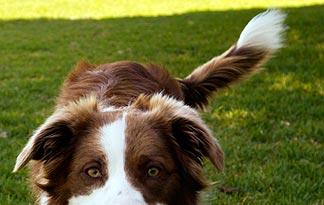
Does A Dog Tail Wag Involuntarily. Siracusa says its difficult to parse meaning from just a tail wag and even other dogs who have a better ability to read those signals than humans do sometimes make mistakes. Ultimately tail wagging in the adult dog tends to be involuntary in response but it can be consciously controlled if the dog chooses to do so. Interpreting your dogs wags. So does a dogs tail wag voluntarily or involuntarily.
Canine consciousness is far closer to human awareness than we used to think. Plus you have to consider that different dog breeds have different types of tails pugs have short curled tails that may not even be able to perform the same functions as say a greyhound tail. Dogs appear to wag their tails in social situations only. Whilst most of us would automatically state that a wagging tail means a dog that is happy this is not necessarily the case. Muscles attach to bone segments as far back as the tip via inelastic collagen cords called tendons. It may be that it is a response to stimuli that they experience.
Whilst most of us would automatically state that a wagging tail means a dog that is happy this is not necessarily the case.
Check and see if the dog is looking at you too with happy soft gaze or are they staring hard not such a happy sign. A slow wag could mean that a dog is. That is is wagging brought about as a biochemical response to a general state of mind or through some deliberate thought process. A tail clamped between your dogs legs means that your dog is really worried and they feel the need to protect themselves. Within Canidae specifically Canis lupus familiaris the tail plays multiple roles this can include balance and communication. Understanding your dogs tail wag.